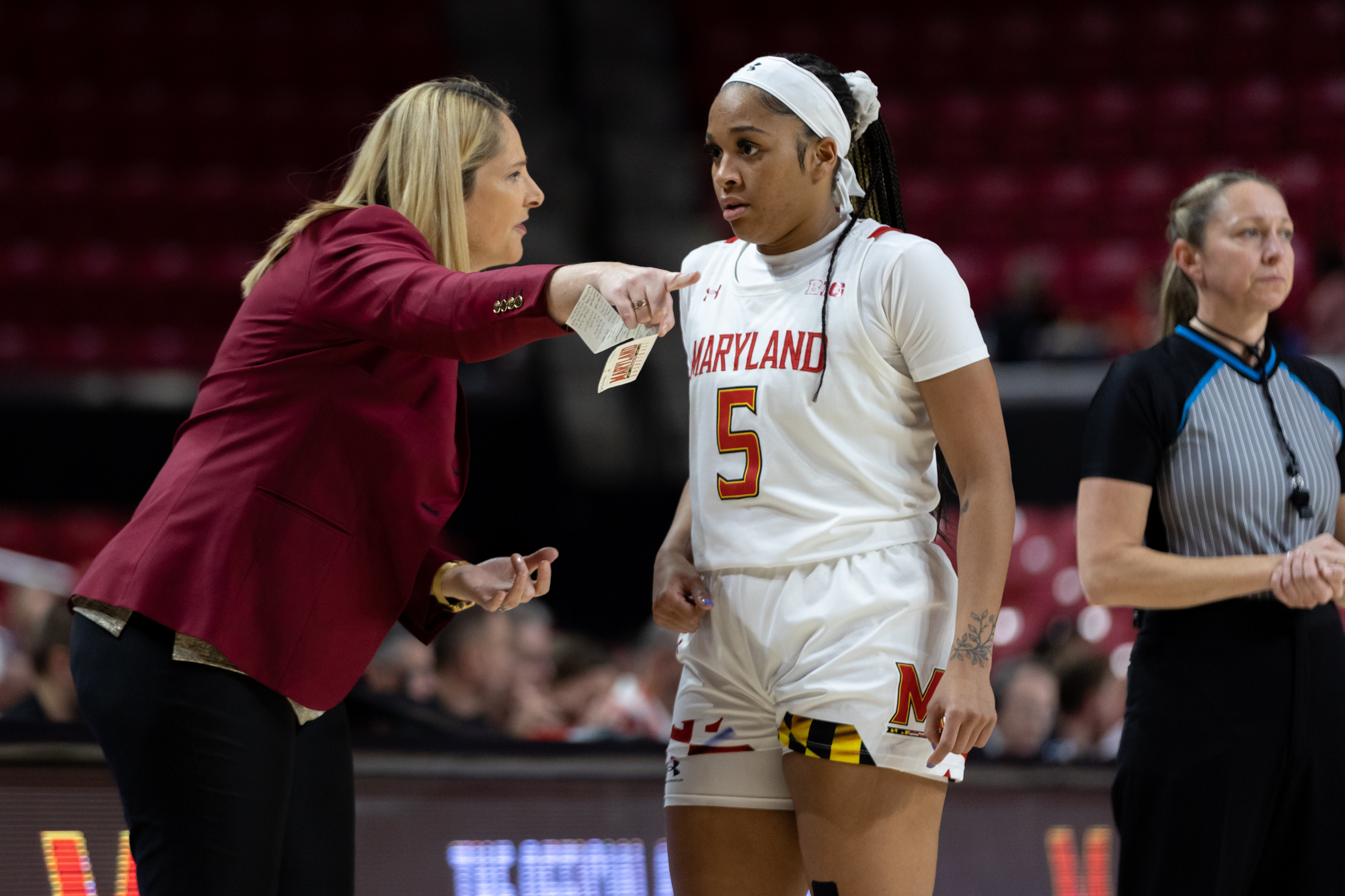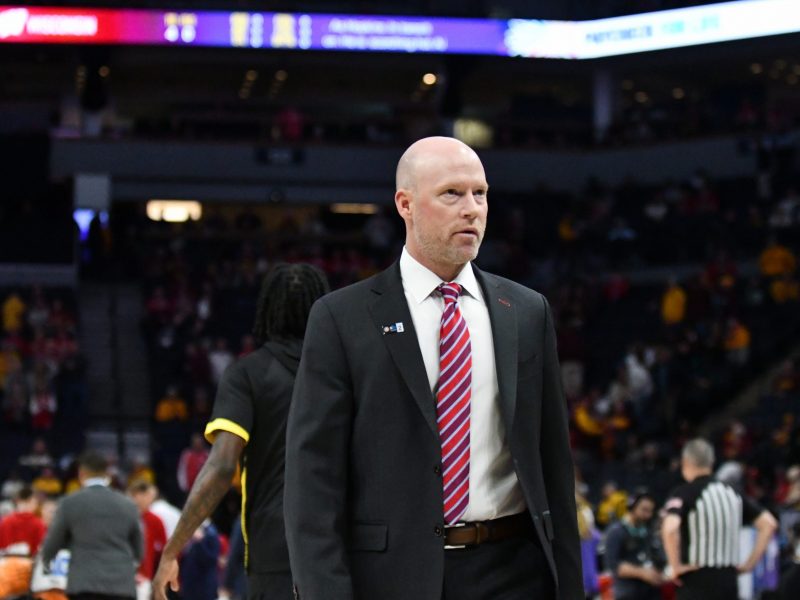Building college rosters used to be an arduous, drawn-out process where coaches would spend months or even years recruiting players locally and nationwide.
But the transfer portal’s ubiquity has changed the team building dynamic for Maryland women’s basketball.
“It’s speed dating in the transfer portal of two to three weeks,” Maryland women’s basketball head coach Brenda Frese told The Diamondback.
After leading the country in scoring during the 2020-21 season, the Terps struggled to replicate their offensive success the following year.
The Terps had five players enter the transfer portal following an inconsistent 2021-22 season that ended with a Sweet 16 loss to Stanford. Coupled with two graduations and one retirement, only five players from the 2021-22 roster remained entering this season.
“It was extremely daunting when we were looking at how many players we were going to have to sign from the portal — just with all the changes and the uncertainty of not knowing … how this roster was going to unfold,” Frese said.
With holes in several positions, Frese signed Ivy League Player of the Year Abby Meyers, Vanderbilt star Brinae Alexander, South Florida’s starting point guard Elisa Pinzan and Towson forward Allie Kubek.
Add Lavender Briggs, who averaged nearly 20 points at Florida before transferring to Maryland in January 2022, and a freshman class that included three top-60 players in ESPN’s 2022 recruiting rankings, and Frese had a roster that featured only a handful of returners.
[Abby Meyers drafted 11th overall in WNBA Draft to Dallas Wings]
“The staff did a phenomenal job,” Frese said. “We put our heads down and went to work and felt like we were getting the right pieces. But there was another element with how well they would blend.”
Despite the question marks surrounding the new roster, the Terps finished this year’s campaign with a 28-win season and an Elite Eight appearance.
College sports have seen tremendous player movement in recent years – and women’s basketball is no exception. With more than 1,000 players in the transfer portal, coaches are susceptible to losing large portions of their rosters – but can use the portal to quickly rebuild.
“I think it just gives a lot of versatility as far as the women’s game,” Alexander said. “But there’s one more class that has COVID years. After that, you know it won’t happen again. I don’t think transfers will stop, but I don’t think it’ll be as much.”
Frese and her staff made shrewd transfer portal decisions with great payoffs last year. Meyers was second on the team in scoring and a first-round pick in the draft. Alexander shot 44 percent from three, Briggs played a key role off the bench and Pinzan started 35 games.
The detriment of utilizing a transfer-heavy rotation was this year’s freshman class’ lack of playing time. Aside from Bri McDaniel, the freshman class logged 318 minutes total, only one minute more than McDaniel alone.
As a result, all three — Gia Cooke, Mila Reynolds and Ava Sciolla — entered the transfer portal shortly after the season ended and have found new homes. Reynolds’ sister, Amiyah, also decommitted from Maryland.
[Diamond Miller selected second overall by Minnesota Lynx in WNBA Draft]
“I think for your Power Five schools, it’s really having an impact on your high school kids because when you can go and get a fifth year, sixth year, someone with that much more experience it really impacts your freshmen coming in and that learning curve,” Frese said.
This duality begs the question of how coaches balance picking up players in the portal for short-term success while balancing the posed to the development of younger players.
“You’re just trying to evaluate the exact science of how many to get out of the portal and how many to develop,” Frese said. “You want your culture, you want those four-year players that build who you are as a coach, as a program, so that’s really important.”
But as difficult as it is for coaches to hold on to athletes, many players see the transfer portal as integral to player empowerment.
“I personally love it because I feel like it holds coaches more accountable for their actions,” Shyanne Sellers said. “It gives us an advantage because it makes you know you’re worth something.”
Looking ahead, the team has already brought in Maryland native Jakia Brown-Turner from NC State, as well as four freshmen, which leaves the Terps with three scholarships and a need at point guard.
The question won’t be if the team fills out its roster; it’s how many players return next season.



